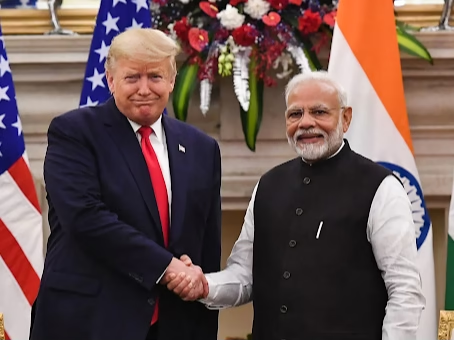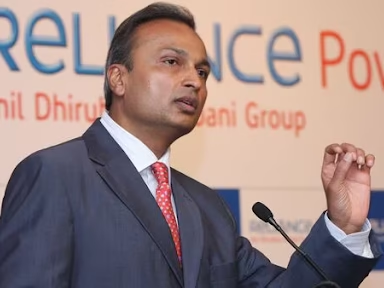
New Delhi15 minutes ago
- Copy link
In February this year, talks on the trade deal between India and the US started.
India may now allow some genetically modified animal feed to finalize the trade deal with the US. According to Bloomberg report, it includes products such as soybean miles and distillers Dride Grains made from maize, which are used in animal feed.
Earlier, the trade deal was stuck in the middle due to import duty on agricultural products. For the trade deal, the US was demanding to reduce import duty on its genetically modified (GM) food such as maize and soybean. US wants these products to sell cheap in India.
At the same time, the Government of India does not want to reduce import duty to protect farmers from loss. Indian officials believe that if the cheap GM foods of America come to India, it will be difficult to sell the crops of Indian farmers. Learn in response to questions here, what will be the harm to India if there is no trade deal…
Question: Why can India genetically allow imported animal feed to import?
answer: India wants a trade agreement between the two countries as soon as possible, so that India’s products do not get heavy tariffs. At the same time, the US is pressurizing for this agreement to allow the import of animal feed made from GM crops.
Question: What is this trade deal and what is its purpose?
answer: This is a trade agreement between India and the US, under which the two countries want to increase business by reducing import duty on each other’s goods. India wants its textile, leather, medicines, and some engineering goods levy zero tax in the US, while the US wants a market in India for its agricultural and industrial products.

Question: When is the deadline of this deal?
answer: The deal is an attempt to finalize by 9 July 2025. If there is no limited agreement by this date, then the US can levy 26% fee on India’s goods.
Question: What are the demands of America?
answer: The US wants India to reduce import duty on GM crops (maize, soybean) and other agricultural products. Also, he wants to relax tariffs and data localization rules on medical devices. The US is also demanding low fees for its dairy products, vehicles, and whiskey.

Question: What has India said in response to the demands?
answer: India refused to accept America’s demands, especially the demand to open agriculture and dairy markets. India says that this will harm millions of poor farmers. Indian products will not be able to compete with American products. India has said that if the US levies a fee on steel and automobiles, then we will also levy counter charges.
Question: What does India want in the deal?
answer: India wants the US to remove or reduce its textile, leather, medicines, and auto parts. India had initially demanded zero fee, but now at least 10% of baseline tariffs are expected to be agreed, which the US is applying to all countries.

Question: What will happen if the deal is not done?
answer: If there is no deal by July 9, the US can impose 26% fee on India’s goods, including textile, medicines, and auto parts. This will harm Indian exporters. India can also increase the fee on American goods in response, which can increase trade tension.
Question: What has happened in the deal so far?
answer: The conversation is still going on. Discussions held in Delhi in June 2025 agreed to issues like digital trade and custom facility. India is considering reducing fees on some agricultural products and vehicles, provided America pays 10% fee on goods such as India’s textiles and shoes. But issues like GM food and dairy remain obstructed.
Question: What can happen next in the deal?
answer: Both India and America want to finalize the deal quickly, but India is giving priority to protect its farmers and local industries. If the deal is not done, India may complain against the US steel and aluminum tariffs in the World Trade Organization (WTO). The two countries will probably try to complete the deal in three phases, with the first phase to July, the second from September-November, and the third may be next year.




